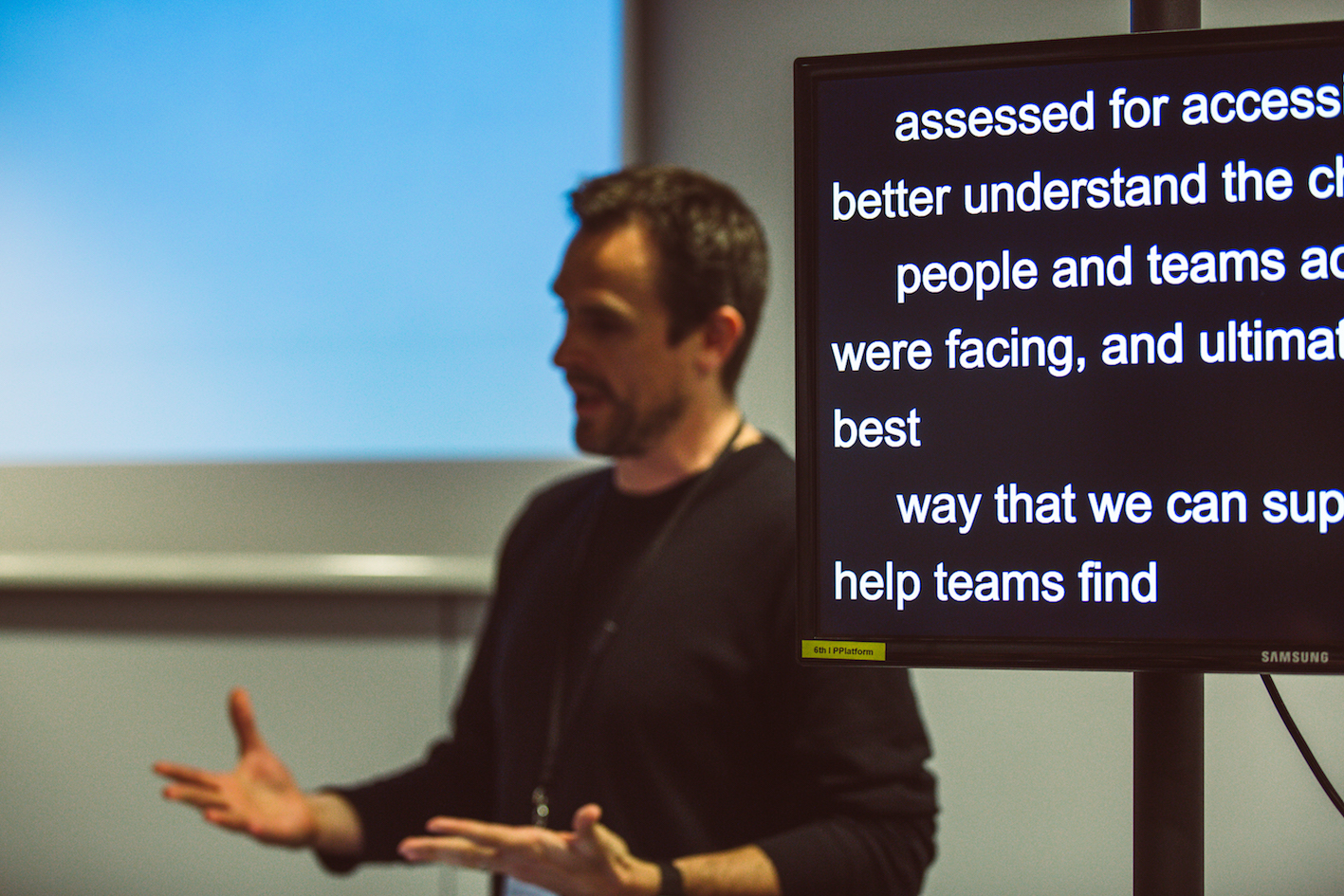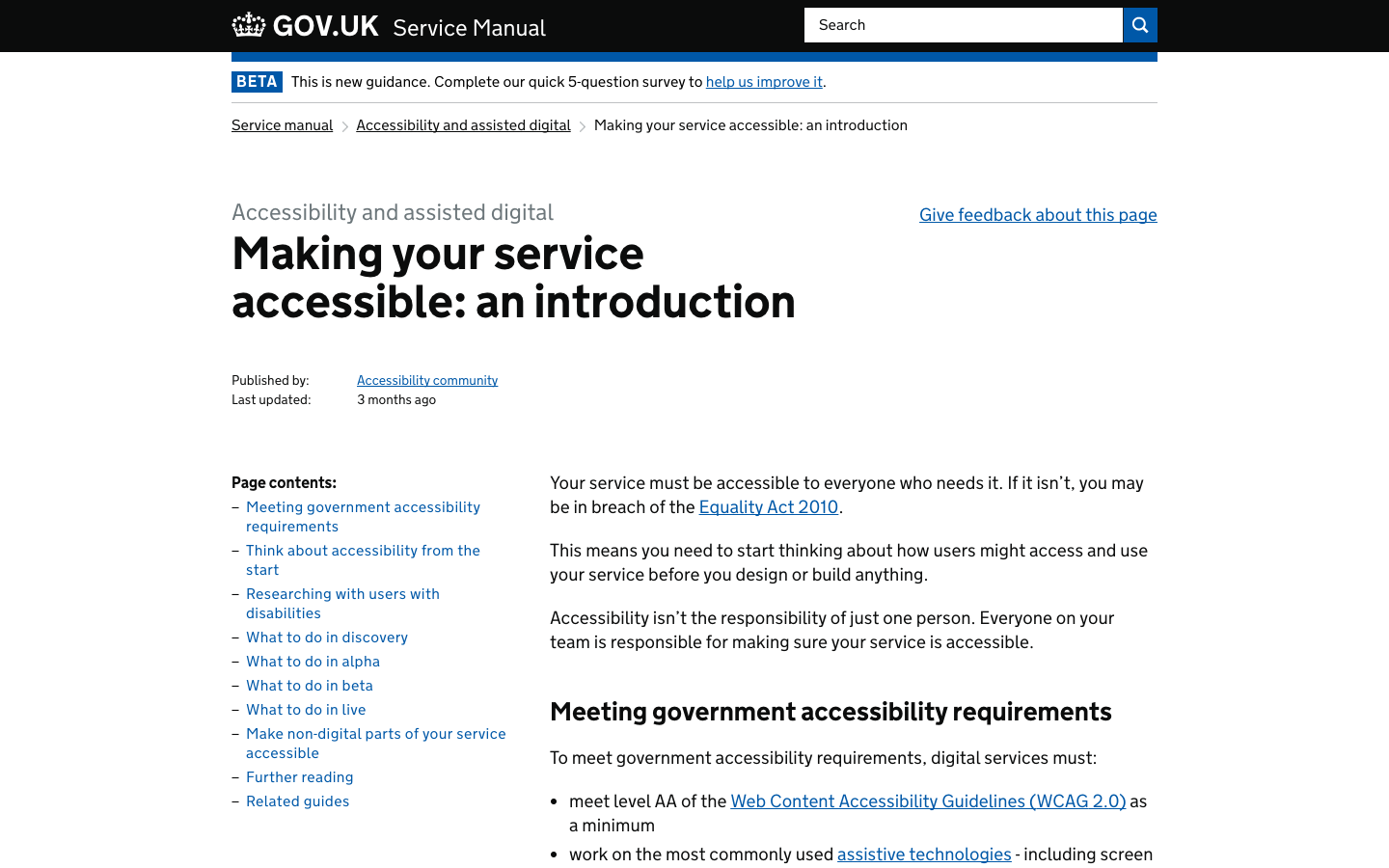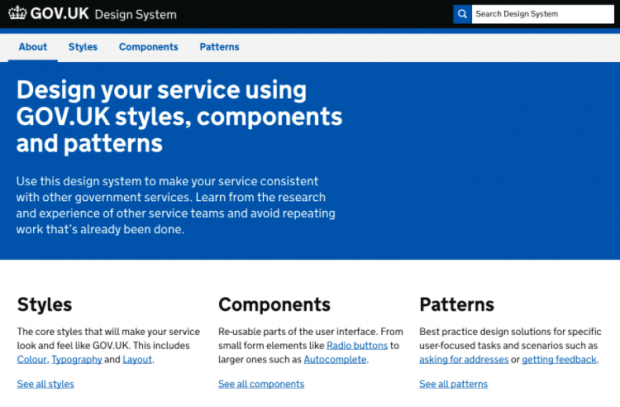
We recently held the fifth Cross-Government Accessibility Meetup. The meetups are regular events where people from across government can come together to share learnings, talk about their work and get to know each other.
More than 100 people came to the event – held on 31 October in London – to hear presentations from a number of departments.
Here’s what we talked about:
Accessibility guidance and assistive technology

I gave a presentation about the updated accessibility guidance that we published in the Service Manual last year. The updated guidance aims to make it easier and clearer for teams to understand what they need to do to make things accessible.
The updates include a new guide on making your service accessible and guidance on testing for accessibility. We recently published a blog post about this work.
Upcoming EU accessibility legislation
Lyndsay Baker and Tim Adey, who work on accessibility policy at GDS, ran a session on the upcoming European Union directive on the accessibility of public sector websites.
The new directive is coming into force later this year and will be transposed into UK law. It means that countries will have to make sure that their public sector websites and apps meet common accessibility requirements. Countries will also have to monitor and report on the accessibility of their public sector websites.
Lyndsay and Tim spoke about how they were helping to co-ordinate the UK government’s approach to the directive and to support public sector organisations to meet its requirements.
Working on accessible components in the GOV.UK Design System

GDS designer Ed Horsford and developer Alex Jurubita talked about the work they have been doing to ensure that the components in the GOV.UK Design System are accessible.
The new GOV.UK Design System has just gone into private beta. It will contain all the styles, components and design patterns that teams in government need to create user-centred digital services. It will bring together things that are currently published in a number of different locations, including the Service Manual and GOV.UK Elements.
Ed and Alex gave the example of the character count component and demonstrated the work and testing that they have been doing to make it accessible.
Making government printing more accessible
Janine Galloway is a user researcher at GDS. She is working on a project to develop a cloud-hosted printing service that could work across government. This would mean a user could send something to print from one building and pick it up in another.
Janine talked about the work she has been carrying out for users with access needs. She said that many people with access needs had a greater requirement to print things. For example, some people with dyslexia can find it easier to read from paper than on screen.
The physical location of printers can also be barrier, Janine said. This can be a particular issue when the location is in a confined space and is overflowing with furniture or if there is paper cluttering the floor.
Keeping secret information secure, yet accessible
Andrew Shillabeer works on the FOXHOUND programme at Cabinet Office. This is a project to develop a secure system to share and collaborate on information and documents classified as secret.
Andrew talked about the work his team have been doing to ensure that the system is as accessible as possible – while maintaining security.
This includes looking at the physical location of terminals used to access the FOXHOUND system and carrying out an accessibility audit across the partner organisations involved. His team also had to work closely with finance and procurement departments to ensure that the right equipment could be made available to people with access needs.
Living with sight loss

Marian Foley is a content designer at GDS. She has chronic relapsing inflammatory optic neuropathy. This means her optic nerves are swollen and affect her vision. She has had sight loss because of this since she was 9 and has previously written about how she uses technology.
Marian said she is particularly sensitive to light and to contrast. This means that headlamps or streetlights can stay imprinted in her vision for hours. She also gets motion sickness very easily.
Marian said that at GDS she is supported in lots of ways. This includes having the right equipment, such as a large monitor with adjusted colours and a 17-inch tablet work phone. She also works flexible hours and usually travels home before it gets dark to minimise the buildup of problematic images.
She shared some advice for working with people who have visual impairments. This included:
- thinking about the physical environment, in particular clearing obstacles and not leaving furniture around
- considering lockers, seating and lighting – if someone has a particular access requirement, ask them where it is best to place things
- being conscious of body language and non-verbal interaction – people with visual impairments may not be able to pick up on this
- sharing documents before meetings so that people with visual impairments aren’t excluded by presentations or by hard-to-read paper handouts
Our next meetup
Our next Cross-Government Accessibility Meetup will be held early this year. Join the Accessibility Community to find out more.
Follow Alistair on Twitter and don't forget to sign up for email alerts.

